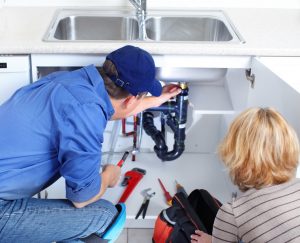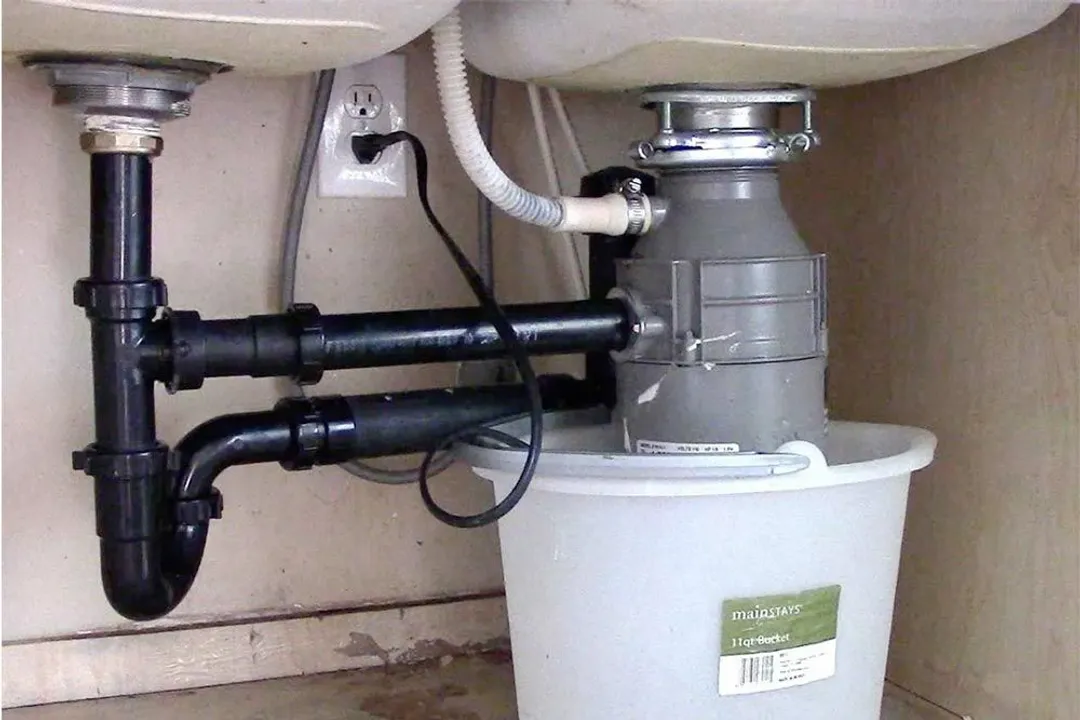Tested Solutions for Fixing a Dripping Garbage Disposal
Tested Solutions for Fixing a Dripping Garbage Disposal
Blog Article
Here in the next paragraph yow will discover additional first-rate ideas in regards to Why Is My Garbage Disposal Leaking From the Bottom?.

Garbage disposals are essential kitchen appliances that help in taking care of food waste successfully. Nevertheless, a leaking garbage disposal can be an irritating and messy problem to manage. Luckily, numerous leakages can be taken care of easily with a couple of easy actions. In this write-up, we will review how to deal with a leaking waste disposal unit effectively.
Intro
Garbage disposals are set up under cooking area sinks and are made to shred food waste right into smaller pieces, permitting it to go through the pipes system conveniently. While these gadgets are generally trusted, leaks can happen gradually as a result of damage, loosened links, or damages to the device.
Common Reasons For Leaks in Trash Disposals
Worn Seals and Gaskets
Seals and gaskets play a critical duty in avoiding water from leaking out of the garbage disposal. Over time, these parts can wear away, leading to leakages around the disposal system.
Loose Connections
The links in between the waste disposal unit and the plumbing system can become loosened in time, triggering water to leak out throughout operation.
Splits or Holes in the Disposal Unit
Physical damage to the garbage disposal, such as cracks or holes in the housing, can also result in leaks.
Identifying the Source of the Leak
Before trying to deal with a dripping waste disposal unit, it is vital to determine the source of the leak. This can typically be done through aesthetic inspection or by carrying out straightforward tests.
Visual Examination
Inspect the waste disposal unit unit thoroughly for any type of indicators of water leakage. Pay very close attention to locations around seals, gaskets, and link factors.
Examining for Leakages
One means to test for leaks is by running water with the disposal system and checking for any kind of noticeable indications of leakage.
Devices and Materials Needed for Taking Care Of a Dripping Waste Disposal Unit
Prior to beginning the repair procedure, gather the needed tools and materials, consisting of a screwdriver, adjustable wrench, plumbing's putty, replacement seals or gaskets, and epoxy or patching product for fixing cracks or openings.
Step-by-Step Guide to Dealing With a Leaking Waste Disposal Unit
Switch off the Power
Before attempting any kind of repair services, ensure that the power to the waste disposal unit system is shut off to avoid the danger of electrical shock.
Find the Leak
Determine the precise location of the leakage and figure out the cause.
Tighten Links
Use a wrench to tighten any kind of loose links in between the disposal unit and the pipes system.
Change Seals or Gaskets
If the leakage is due to worn seals or gaskets, eliminate the old parts and change them with new ones.
Patching Cracks or Holes
For splits or openings in the disposal system, use epoxy or an ideal patching product to secure the damaged area.
Checking the Waste Disposal Unit After Repair Work
As soon as the repair is full, test the waste disposal unit by running water through it to make sure that the leakage has actually been solved.
Preventive Upkeep Tips to Avoid Future Leakages
To stop future leaks, it is essential to execute routine maintenance on your waste disposal unit. This includes maintaining it tidy, avoiding putting non-food items or hard things down the disposal, and occasionally checking for leaks or various other concerns.
Final thought
In conclusion, dealing with a dripping garbage disposal is a fairly simple process that can be finished with fundamental tools and products. By following the steps laid out in this write-up and exercising preventive upkeep, you can keep your garbage disposal in good working condition and prevent pricey repairs in the future.
HERE’S HOW TO FIX YOUR GARBAGE DISPOSAL
WHAT TO DO IF SOMETHING IS STUCK IN YOUR GARBAGE DISPOSAL
If the impeller won’t turn, there’s probably something stuck in the disposal. It could be a steak bone or peach pit, although plumbers report pulling all sorts of inappropriate objects out of disposals, such as bottle caps or aluminum foil. Make sure power to the disposal is off, and look inside to see if you can see the source of the jam.
Never stick your fingers in a disposal. Pull out anything you see with tongs or pliers.
If the disposal still won’t work, it may be time to call a plumber or consider buying a new disposal. GEM Plumbing & Heating is here for all of your garbage disposal needs.
WHAT TO DO IF YOUR GARBAGE DISPOSAL DRAIN IS CLOGGED
Take everything out from underneath your sink and put a bucket or other container under your disposal to catch any water that drains out. Disconnect your disposal from the power supply. If it’s plugged into a wall outlet, unplug it. If it’s hardwired into an electrical box, go to the electrical panel and turn off the breaker for the disposal. Pour ¼ cup of baking soda into the drain, followed by ½ cup of white vinegar. Give the solution a few minutes to fizz and do its work. Look into the disposal with a flashlight to see if you can see an object that might be causing the clog. If you see it, remove it using tongs or pliers. MORE TIPS ON DEALING WITH A CLOGGED GARBAGE DISPOSAL
Never use drain cleaner in a garbage disposal. It can damage the plastic parts inside the disposal. You can also be splashed with the caustic liquid while working to clear the clog. Beware! Never stick your fingers into a garbage disposal. Trust us — not a good idea. In many instances, your dishwasher drains through your garbage disposal. This allows the disposal to grind any large food particles that may be drained out of your dishwasher. There are some jurisdictions, however, where the plumbing code prohibits such a connection. WHAT TO DO WHEN YOUR DISHWASHER DRAINS THROUGH THE DISPOSAL
Run some water in the sink so your plunger has at least a ½-inch of water to create a seal and plunge vigorously up and down several times. You may need to repeat this several times. Run hot water down the drain to clear any residue that remains.

I recently found that blog post about Why Is while browsing on the internet. If you please take the opportunity to distribute this blog post if you appreciated it. Thanks so much for going through it.
Schedule Appointment Report this page